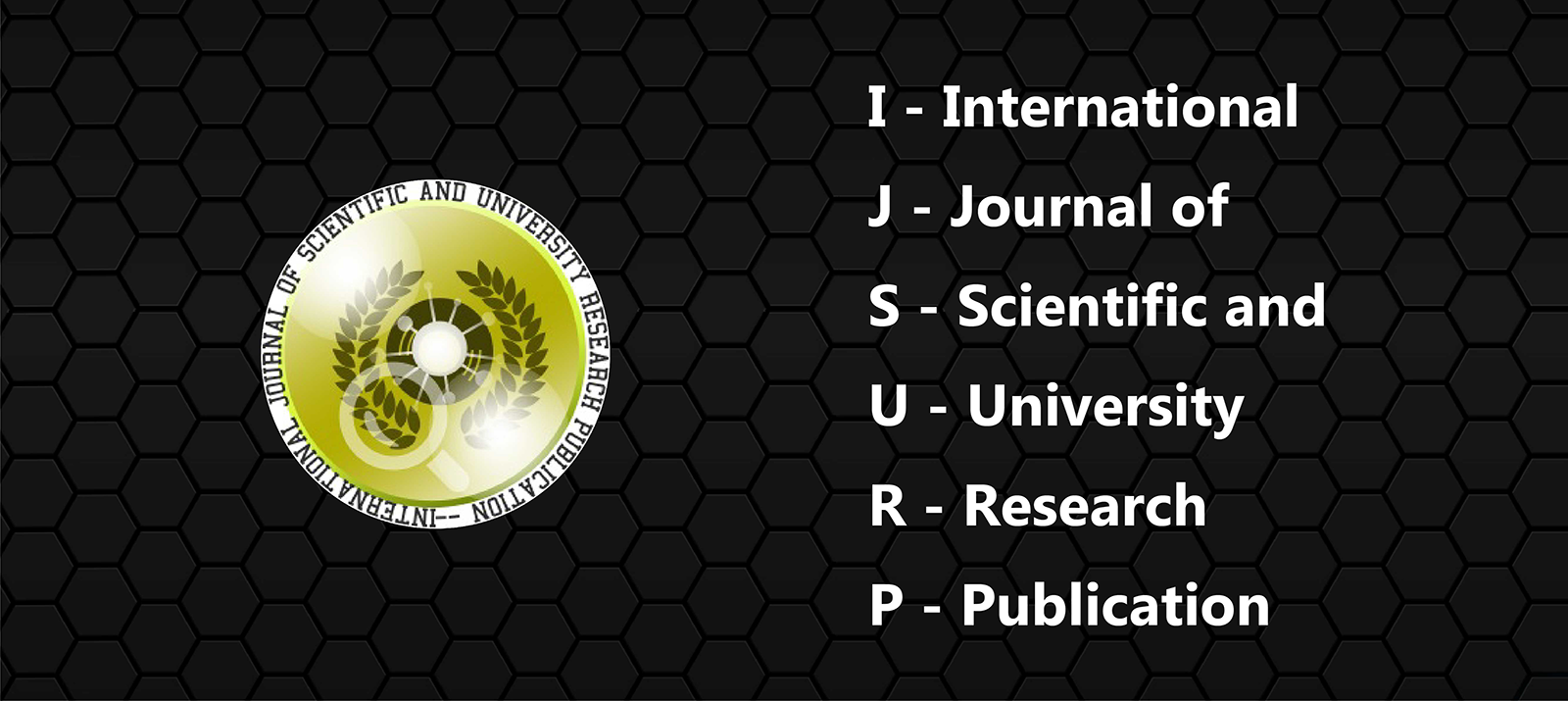
Zerovalent Bismuth Nanoparticle as an Aid for Treatment of Dental Caries by Inhibiting Streptococcus Mutans
Authore(s) : Amey Sukhia || Professor
Volume : (7), Issue : (6), June - 2020
Abstract : Dental caries is a dental biofilm-related disease associated with increased consumption of dietary sugar and fermentable carbohydrates. This biofilm matures to become cariogenic and in some cases the bacteria present in the biofilm turns food starches into acid which erodes teeth. Streptococcus mutans (S. Mutans) was found to be the most dominant species in caries initiation having acidogenic and aciduric properties. Glucosyl transferases (Gtfs) have the main role in adhering S. Mutans on tooth enamel which eventually leads to a tooth decay. The adherence of S. Mutans to the surface of enamel or the physiological ability (acidogenity and aciduricity) in dental biofilms can be reduced, resulting in a decrease caries formation which may be achieved by using a nanostructured material. Nanostructured material are used in many fields, including biological sciences and medicine. Zerovalent bismuth nanoparticles were introduced to resist the resistance caused by microbes to various antibiotics and also showing antimicrobial and antibiofilm activity. However the mechanism of antimicrobial activity and antibiofilm activity is not completely understood, and their precise mechanism of action against bacteria remains to be fully elucidated.
Keywords :Dental caries, Streptococcus mutans (S. Multan), Glucosyl transferal (Gtfs), Bismuth Nano particles
Article: Download PDF Journal DOI : 102/275
Cite This Article:
Zerovalent Bismuth Nanoparticle as an Aid for Treatment of Dental Caries by Inhibiting Streptococcus Mutans
Vol.I (7), Issue.I (6)
Article No : 12447
Number of Downloads : 100
References :
Qiong Zhaung, Bhavitavya Nijampatnam, Zhaung Hua, et al. “Structure-Based Discovery of Small Molecule Inhibitors of Cariogenic Virulence” article no: 5974(2017).doi:10.1038/s41598-017-06168-1.
Sofia D. Forssten, Marika Björklund, and Arthur C. Ouwehand. (2010 Mar)”Streptococcus mutans, Caries and Simulation Models”. Pg no: 290-298. Doi: 10.3390/nu2030290.
Falagas ME, Fragoulis KN, Karydis I. A comparative study on the cost of... More
- Qiong Zhaung, Bhavitavya Nijampatnam, Zhaung Hua, et al. “Structure-Based Discovery of Small Molecule Inhibitors of Cariogenic Virulence” article no: 5974(2017).doi:10.1038/s41598-017-06168-1.
- Sofia D. Forssten, Marika Björklund, and Arthur C. Ouwehand. (2010 Mar)”Streptococcus mutans, Caries and Simulation Models”. Pg no: 290-298. Doi: 10.3390/nu2030290.
- Falagas ME, Fragoulis KN, Karydis I. A comparative study on the cost of new antibiotics and drugs of other therapeutic categories. PloS One. 2006; 1:e11.
- Aoki, H., Shiroza, T., Hayakawa, M., Sato, S. & Kuramitsu, H. Cloning of a Streptococcus mutans glucosyltransferase gene coding for insoluble glucan synthesis. Infection and Immunity 53, 587–594 (1986).
- Hanada, N. & Kuramitsu, H. K. Isolation and characterization of the Streptococcus mutans gtfC gene, coding for synthesis of both soluble and insoluble glucans. Infection and Immunity 56, 1999–2005 (1988).
- Hanada, N. & Kuramitsu, H. K. Isolation and characterization of the Streptococcus mutans gtfD gene, coding for primer-dependent soluble glucan synthesis. Infection and Immunity 57, 2079–2085 (1989).
- Mosmann T. Rapid colorimetric assay for cellular growth and survival: application to proliferation and cytotoxicity assays. J Immunol Methods. 1983; 65(1– 2):55–63.
- Liu Y, Peterson DA, Kimura H, Schubert D. Mechanism of cellular 3-(4,5-dimethylthiazol-2-yl)-2,5- diphenyltetrazolium bromide (MTT) reduction. J Neurochem. 1997; 69(2):581–593.
- Yue H, Eastman PS, Wang BB, et al. An evaluation of the performance of cDNA microarrays for detecting changes in global mRNA expression. Nucleic Acids Res. 2001; 29(8):E41.
- Frey T. Nucleic acid dyes for detection of apoptosis in live cells. Cytometer. 1995; 21(3):265–274.
- Colvin VL. The potential environmental impact of engineered nanomaterial’s. Nat Bioethanol. 2003; 21(10):1166–1170.
- Kim JS, Kuk E, Yu KN, et al. Antimicrobial effects of silver nanoparticles. Nanomedicine. 2007; 3(1):95–101.
... Less
- Qiong Zhaung, Bhavitavya Nijampatnam, Zhaung Hua, et al. “Structure-Based Discovery of Small Molecule Inhibitors of Cariogenic Virulence” article no: 5974(2017).doi:10.1038/s41598-017-06168-1.
- Sofia D. Forssten, Marika Björklund, and Arthur C. Ouwehand. (2010 Mar)”Streptococcus mutans, Caries and Simulation Models”. Pg no: 290-298. Doi: 10.3390/nu2030290.
- Falagas ME, Fragoulis KN, Karydis I. A comparative study on the cost of new antibiotics and drugs of other therapeutic categories. PloS One. 2006; 1:e11.
- Aoki, H., Shiroza, T., Hayakawa, M., Sato, S. & Kuramitsu, H. Cloning of a Streptococcus mutans glucosyltransferase gene coding for insoluble glucan synthesis. Infection and Immunity 53, 587–594 (1986).
- Hanada, N. & Kuramitsu, H. K. Isolation and characterization of the Streptococcus mutans gtfC gene, coding for synthesis of both soluble and insoluble glucans. Infection and Immunity 56, 1999–2005 (1988).
- Hanada, N. & Kuramitsu, H. K. Isolation and characterization of the Streptococcus mutans gtfD gene, coding for primer-dependent soluble glucan synthesis. Infection and Immunity 57, 2079–2085 (1989).
- Mosmann T. Rapid colorimetric assay for cellular growth and survival: application to proliferation and cytotoxicity assays. J Immunol Methods. 1983; 65(1– 2):55–63.
- Liu Y, Peterson DA, Kimura H, Schubert D. Mechanism of cellular 3-(4,5-dimethylthiazol-2-yl)-2,5- diphenyltetrazolium bromide (MTT) reduction. J Neurochem. 1997; 69(2):581–593.
- Yue H, Eastman PS, Wang BB, et al. An evaluation of the performance of cDNA microarrays for detecting changes in global mRNA expression. Nucleic Acids Res. 2001; 29(8):E41.
- Frey T. Nucleic acid dyes for detection of apoptosis in live cells. Cytometer. 1995; 21(3):265–274.
- Colvin VL. The potential environmental impact of engineered nanomaterial’s. Nat Bioethanol. 2003; 21(10):1166–1170.
- Kim JS, Kuk E, Yu KN, et al. Antimicrobial effects of silver nanoparticles. Nanomedicine. 2007; 3(1):95–101.






